IMPORTANT MESSAGE!!
(Puppy Buyers and American Bulldog Owners please read this!)
Puppies tend to be active, always on the go, and looking for something to do in between rest and sleep.
It is important that as owners of an American Bulldog puppy you DO NOT give your puppy too much exercise or exercise your puppy to the point that they tire out no longer want to play.
A new American Bulldog puppy owner needs to be aware that your pup's growth plates can be come damaged by too much movement or the incorrect type of movement while your puppy is still developing their bones.
That is why it is very important that American Bulldog puppies......
DO NOT run up and down stairs,
DO NOT run down steep hills,
DO NOT jump on or off beds and furniture,
DO NOT jump in and out of vehicles
DO NOT run or retrieve toys on wood, vinyl, or ceramic floors which can cause their feet to slide out from under them.
Do not allow your American Bulldog puppy to do any of these as these movements can all cause damage to growth plates, ligaments, tendons, and their under developed joints.
You will need to assist them getting in & out of vehicles to help take the strain off their bones and joints.
In order to be able to work out how much exercise your puppy needs, to ensure that their growth plates develop properly and normally, it is first important to know what growth plates are, what they do, and how they develop.
WHAT ARE GROWTH PLATES?
Growth plates are soft areas that are located near the ends of long bones in puppies and young dogs. The growth plates are responsible for the growth of bones and most of this growth occurs between 3-9 months of age.
Once the animal is mature, the growth plate closes. In an average sized dog, most growth plates are closed at approximately 12 months old. However in very large or giant breed dogs, which include the American Bulldog, they may remain open until 18 months old.
Until the growth plates close the growth plates are soft & venerable to injury.
Growth Plate - Open (Puppy) Growth Plate Closed (Adult)
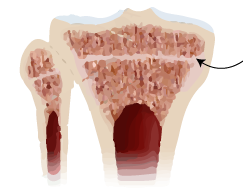
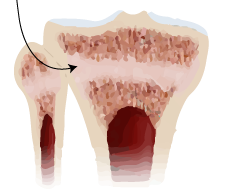
In the X-ray of a 2 week old puppy (below left) the bones have long way to grow before they become mature bones & joints.
In the X-ray of a 7 month old puppy (below right) the growth plates are visible which means the bones are still developing.
2 Week Old Puppy 7 Month Old Puppy

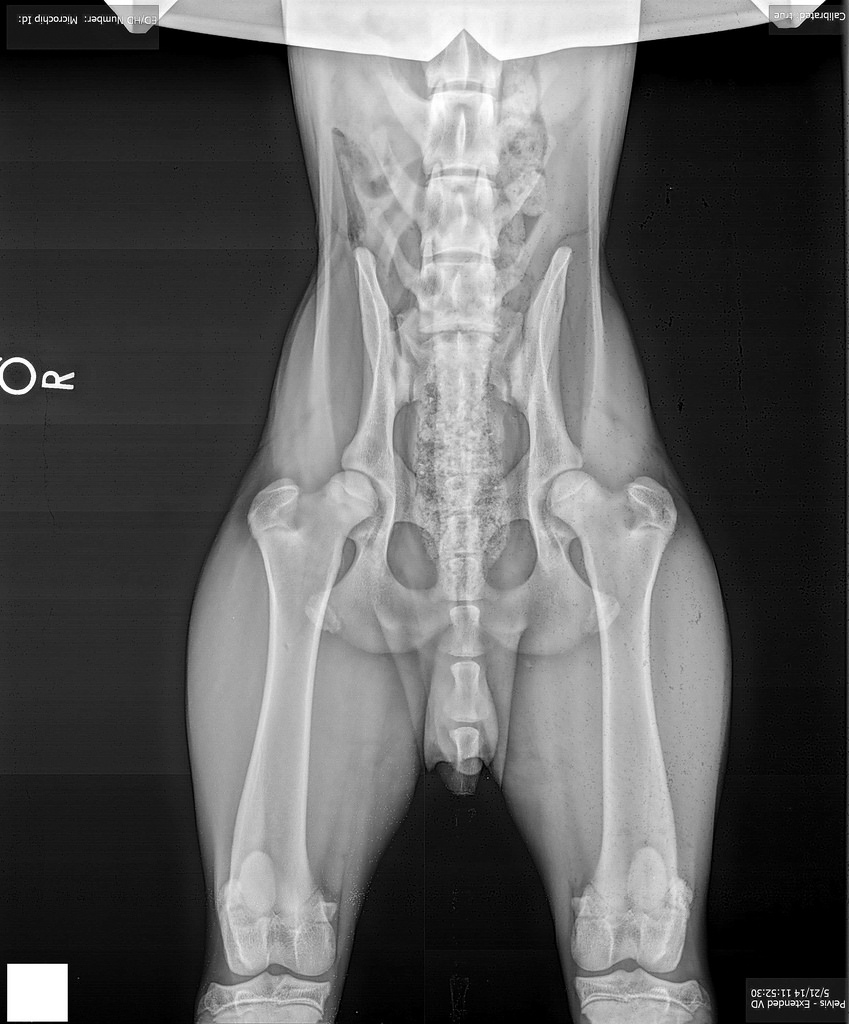
In the X-ray of an adult (below) the growth plates have closed and are not visible.
Adult
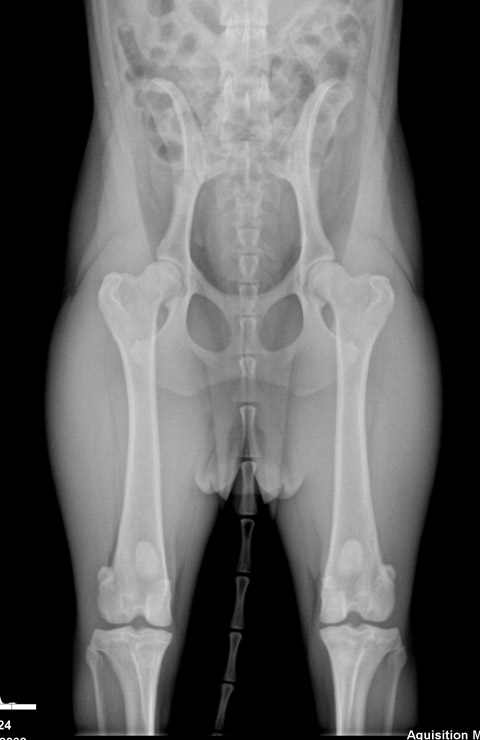
INJURY TO PUPPIES
A dog’s bones are held together with muscles, tendons, and ligaments.
In an adult dog, if a joint is bent the wrong way or rotating too much, the bone will hold firm and soft tissue will be pulled resulting in a strain.
In a puppy, however, his muscles, ligaments, and tendons are stronger than his growth plates and can pull apart his growth plate. So instead of a simple sprain, his growth plate is injured.
Why this matters is that, unlike a sprain, injuries to growth plate may not heal properly or not heal in time for the puppy to grow straight and strong.
For example; forearm of the leg….if the growth plate is damaged and stops growing, the opposite bone will continue to develop normally. This may lead to bow legs and the puppy will retain awkward movement for the rest of its life.
This can over time, lead to uneven pressure on the other legs and cause a range of secondary problems for the dog as it ages.
Spiral Fracture
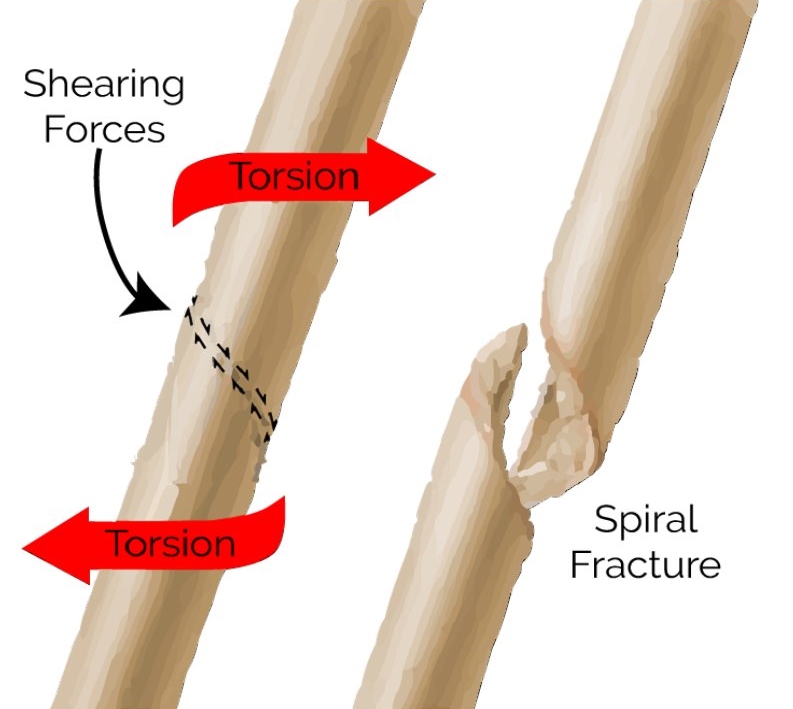
In addition to having soft growth plates a puppy’s bones in general are “softer”.
A spiral fracture (see above) is where the bottom half of the bone twists in one direction & top half twists in the other direction.
So any exercise that puts torque on (twists) a bone puts the puppy at risk for a fracture.
This is why you should NEVER let your growing puppy jump, walk up/down stairs or steep hills, over exercise them.
Doing too much impact activity at a young age will cause serious issues later in life, or even at a young age hip or elbow dysplasia and other orthopedic conditions.
HOW MUCH EXERCISE
DO PUPPIES NEED?
Self Directed Play is a rule for any puppy under 12 months old. The majority of your puppies exercise should be free play, exploring, and sniffing around.
If he shows any fatigue, flops down, refuses to walk, you should listen to him and let him rest.
Every dog needs exercise, so does a young pup, but it needs to be controlled.
Treat a puppy like a baby, let them play, eat and go to bed.
Very slowly increase the amount of exercise…..
8 to 9 weeks: 10 minutes, four times a day
9 to 10 weeks: 15 minutes, four times per day
11 to 16 weeks: 20 minutes, four times a day
16 weeks to 5 months 25 minutes, four times a day
5 to 7 months 30 minutes, four times a day
Leave a puppy until 12 months old before loose playing with other dogs (watch out for bigger dogs) as this increases the risk of bone and muscle damage.
Enjoy your new puppy but remember you wouldn't make a 6 month old baby run a mile a day so don't make your puppy either!
DIETARY INFLUENCE ON
PUPPY GROWTH
Over nutrition & rapid growth in puppies can also lead to bone, ligaments, & tendon abnormalities.
To help prevent this it is very important to control your puppy’s growth & weight.
This is done by controlling how much they eat and by keeping your puppy in an ideal body condition (see diagram below).
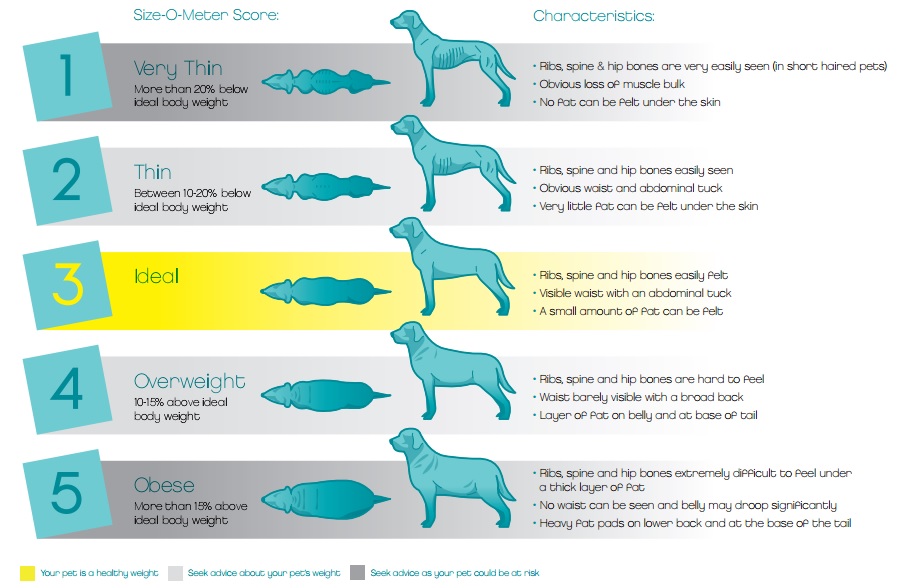
Growing puppies need to be fed an appropriate diet, one that is not extremely high in calories or protein.
We recommend that your puppy’s kibble is 26% protein or less.
Do not be in a hurry to have a “big” dog and in turn put too much weight on your puppy. This is damaging to your growing puppy’s body.
An American Bulldog will be a large dog and they will grow to their full potential in their own time, the slower the growth the better.
THIS GROWING PUPPY INFO WAS
CONSTRUCTED BY GRAYs AMERICAN BULLDOGS


Page Views:
No part of this website may be used in any form or by any means without written consent by Gray's American Bulldogs.
Any use of this website without written consent is punishable by law.